Jaisinghpura Road, Bhankrota, Jaipur-302026.
Jaisinghpura Road, Bhankrota, Jaipur-302026.

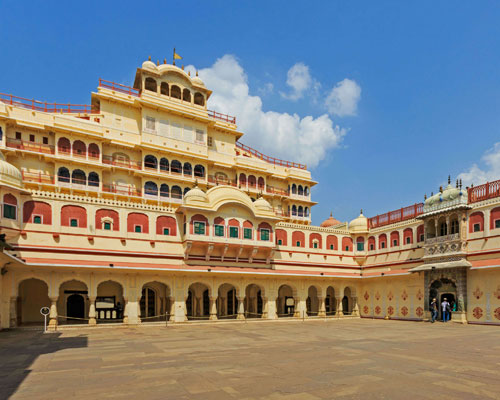
Introduction:
The City Palace in Jaipur, also known as the "Chandra Mahal," is a splendid example of Rajput and Mughal architecture. It stands as a testament to the grandeur and opulence of the Maharajas of Jaipur. Located in the heart of the Pink City, Jaipur, this palace complex is a must-visit for anyone interested in history, culture, and architectural marvels.
The construction of the City Palace began in 1729 by Maharaja Sawai Jai Singh II, the founder of Jaipur and a prominent ruler of the Kachwaha Rajput dynasty. Over the centuries, successive rulers added to the complex, resulting in a stunning blend of Rajput, Mughal, and European architectural styles.
Visiting City Palace:
The City Palace is open to visitors and offers a captivating glimpse into the royal history of Jaipur. It is advisable to allocate several hours to explore the various buildings, courtyards, and museums within the complex. The architecture, artistry, and historical significance of the palace make it a must-visit attraction in Jaipur.
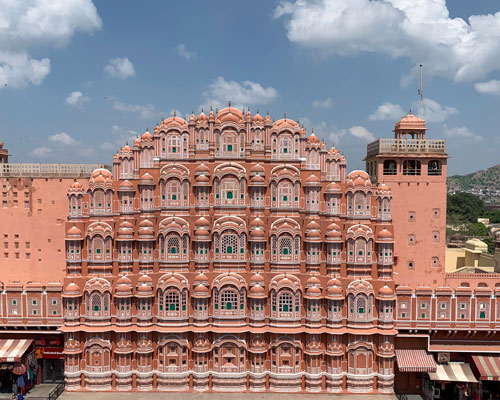
Introduction:
Hawa Mahal, translating to "Palace of Winds," is a mesmerizing architectural gem located in the heart of the Pink City, Jaipur. This stunning palace, built in 1799 by Maharaja Sawai Pratap Singh, is not just a building but a testament to the rich cultural heritage and architectural brilliance of Rajasthan.
Hawa Mahal is celebrated for its extraordinary design, characterized by its intricate latticework windows and balconies. The facade of the palace resembles the honeycomb of a beehive and boasts 953 small windows, known as "jharokhas," which are designed to allow the flow of air and create a cooling effect during the scorching summers of Rajasthan.
Visiting Hawa Mahal:
Hawa Mahal is open to visitors and is a must-see attraction in Jaipur. Tourists can explore the various levels of the palace and get a glimpse of the intricate architecture and the city's vibrant streets through the jharokhas. It's especially enchanting during the early morning hours when the soft sunlight filters through the latticework.
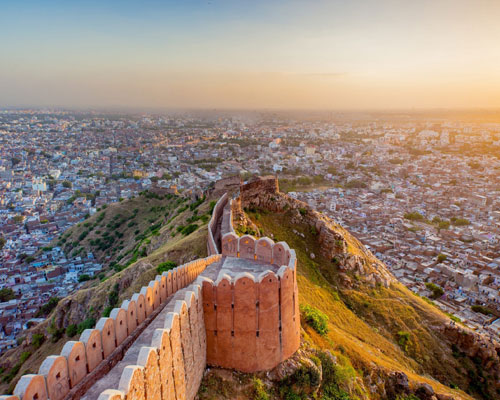
Introduction:
Nahargarh Fort, located on the edge of the Aravalli hills in Jaipur, Rajasthan, is a formidable structure that has played a significant role in the region's history. Its name, "Nahargarh," translates to "Abode of Tigers," and it has earned this name due to its location amidst the wilderness, inhabited by these majestic creatures in the past.
Nahargarh Fort was built in 1734 by Maharaja Sawai Jai Singh II, the founder of Jaipur, as a defensive fortification for the city. The fort, along with its sister forts, Jaigarh and Amer Fort, formed a strong defense network for the Pink City. It served as a retreat for the royal family during times of war and peace.
Visiting Nahargarh Fort:
Nahargarh Fort is a popular tourist destination, and visitors can explore its various sections, including the palace, while also enjoying the panoramic views of Jaipur. The fort is especially enchanting at sunset when the city lights begin to twinkle.
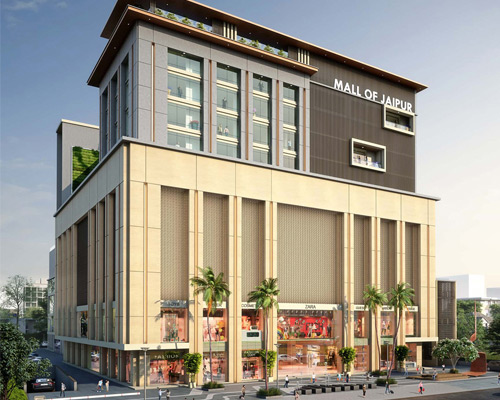
Shopping Malls In Jaipur:
Jaipur, the capital of Rajasthan, is known for its vibrant markets and shopping experiences. Over the years, several modern shopping malls have been developed in the city to cater to the growing retail and entertainment needs of residents and tourists. Here are some well-known shopping malls in Jaipur:
World Trade Park (WTP):
WTP is one of Jaipur's largest and most popular shopping malls. It boasts a wide range of national and international brands, along with restaurants, cafes, a multiplex cinema, and entertainment options.
Pink Square Mall:
Located in the heart of the city, Pink Square Mall is a shopping and entertainment complex offering a variety of retail stores, dining options, and a cinema.
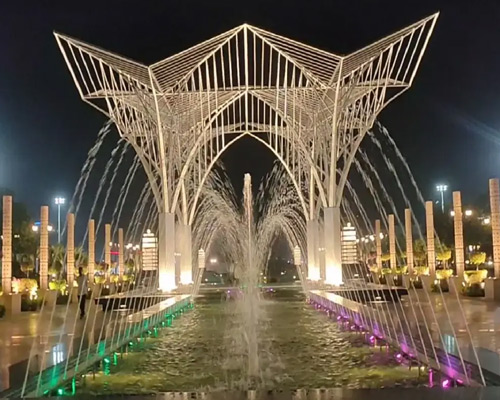
Introduction:
City Park is a sprawling urban park located in the Mansarovar area of Jaipur, the capital city of Rajasthan, India. It is a tranquil oasis amidst the urban landscape, providing a peaceful retreat for people of all ages. This well-maintained park is a favorite destination for locals and tourists alike.
Visiting City Park:
City Park is open to the public and is a peaceful escape for those seeking a break from the city's hustle and bustle. Whether you want to go for a jog, have a family picnic, or simply relax amidst nature, the park offers something for everyone. It's a great place to connect with nature and enjoy some leisurely moments.
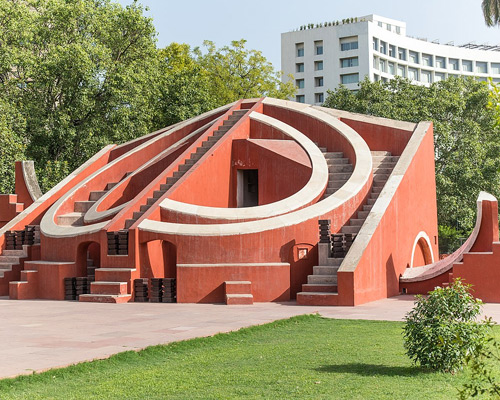
Introduction:
Jantar Mantar, located in the heart of the Pink City, Jaipur, is a historic astronomical observatory constructed during the 18th century. This fascinating site, which consists of a collection of architectural and astronomical instruments, is a testament to the scientific acumen of Maharaja Sawai Jai Singh II, the founder of Jaipur.
Jantar Mantar was built between 1727 and 1734 by Maharaja Jai Singh II, a keen astronomer and mathematician. He commissioned the construction of five Jantar Mantars across northern India to accurately measure time, predict celestial events, and gather astronomical data.
Visiting Jantar Mantar:
Jantar Mantar is open to visitors and is a popular tourist attraction in Jaipur. Exploring this site provides a unique opportunity to appreciate the scientific achievements and architectural brilliance of the past. Local guides are available to explain the functioning of the instruments and their significance in astronomical observations.
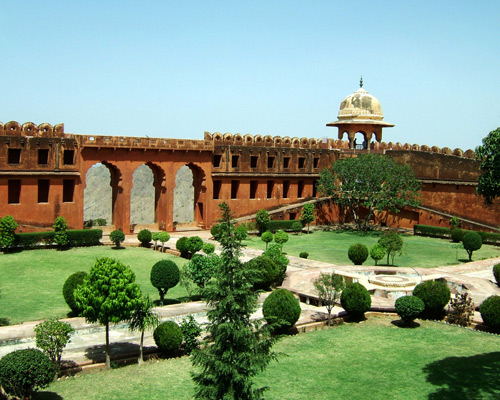
Introduction:
Jaigarh Fort is a magnificent hilltop fort situated on the Aravalli Range, overlooking the Pink City of Jaipur. It was built during the reign of Maharaja Sawai Jai Singh II, the founder of Jaipur, in the early 18th century. The fort served both as a defensive structure and a royal treasury.
Visiting Jaigarh Fort:
Jaigarh Fort is open to tourists, and exploring its well-preserved structures and expansive grounds is a fascinating experience. Visitors can also take a leisurely walk along the fort's walls, marvel at the massive cannons, and appreciate the historical significance of this impressive fortress.
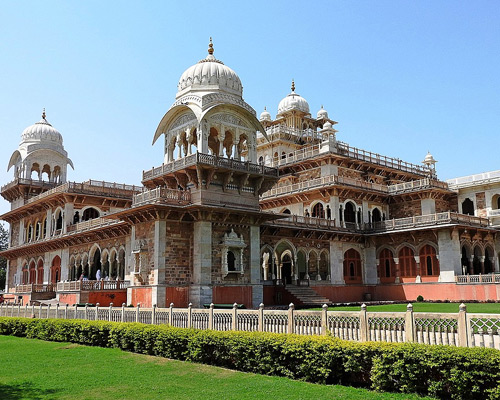
Introduction:
The Albert Hall Museum, named after King Edward VII, who was also known as the Prince of Wales, is a magnificent museum in Jaipur. It was designed by the British architect Samuel Swinton Jacob and opened to the public in 1887. The museum is an exquisite example of Indo-Saracenic architecture, featuring a blend of Mughal, Rajput, and European design elements.
The museum's primary purpose was to serve as a public hall to commemorate the visit of the Prince of Wales to Jaipur. However, over the years, it evolved into a museum that houses a diverse and extensive collection of art, artifacts, and historical items.
Visiting the Museum:
The Albert Hall Museum is open to the public and is a popular destination for tourists and art enthusiasts. The well-organized galleries and the museum's architecture make it a delightful place to explore Rajasthan's rich cultural heritage.